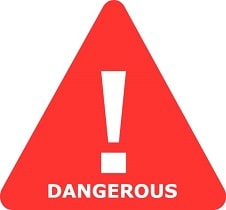Is KW 2307 base Safe in Breastfeeding
Question
I am a breastfeeding mother and i want to know if it is safe to use KW 2307 base? Is KW 2307 base safe for nursing mother and child? Does KW 2307 base extracts into breast milk? Does KW 2307 base has any long term or short term side effects on infants? Can KW 2307 base influence milk supply or can KW 2307 base decrease milk supply in lactating mothers?
KW 2307 base lactation summary

- DrLact safety Score for KW 2307 base is 7 out of 8 which is considered Dangerous as per our analyses.
- A safety Score of 7 indicates that usage of KW 2307 base may cause toxic or severe side effects in breastfed baby.
- Our study of different scientific research indicates that KW 2307 base may cause moderate to high side effects or may affect milk supply in lactating mother.
- Our suggestion is to use safer alternate options rather than using KW 2307 base .
- Usage of KW 2307 base is in contradiction to breastfeeding hence if it is must to use KW 2307 base and there is no better alternative available then breastfeeding shall be stopped permanently or temporarily.
- Score calculated using the DrLact safety Version 1.2 model, this score ranges from 0 to 8 and measures overall safety of drug in lactation. Scores are primarily calculated using publicly available case studies, research papers, other scientific journals and publically available data.
Answer by Dr. Ru: About KW 2307 base usage in lactation
Semi-synthetic vinca alkaloid with an anti-neoplastic activity similar to Vinblastine (see specific info).Indicated for the treatment of certain forms of lung and breast cancer.Routes of administration: intravenous and oral. At latest update relevant published data were not found on excretion into breast milk. In spite of a pharmacokinetic data (large volume of distribution, molecular weight and high binding capacity to blood cells, especially to platelets) that would make it unlikely the passage to milk of significant amounts along with a low bioavailability that would hinder the passage to infant plasma, most experts advise against the use of anti-neoplastic drugs during lactation due to a potential harmful effect on the infant (Pentheroudakis 2010, Koren 2013, pistil 2013, Anderson 2016) until safety data with relation to breastfeeding are provided.It has also been shown that anti-neoplastic drugs may alter the microbial flora balance of breastmilk (Urbaniak 2014). Whenever the option of continuing breastfeeding is preferred, it should be wait for a 5 half-lives period to resume breastfeeding, a period in which 97% of the drug would be eliminated from the body (Anderson 2016).In case of using such a drug it would be wise waiting for 10 days after the last dose to resume breastfeeding. Meanwhile, pump-and-dump regularly to keep production of breastmilk going.
Answer by DrLact: About KW 2307 base usage in lactation
Most sources consider breastfeeding to be contraindicated during maternal antineoplastic drug therapy.[1] It is probably impractical to resume breastfeeding after KW 2307 base therapy because of the drug's long half-life. Chemotherapy may adversely affect the normal microbiome and chemical makeup of breastmilk.[2]
KW 2307 base Possible Effects in Breastfeeding
A woman diagnosed with Hodgkin's lymphoma during the second trimester of pregnancy received 3 rounds of chemotherapy during the third trimester of pregnancy and resumed chemotherapy 4 weeks postpartum. Milk samples were collected 15 to 30 minutes before and after chemotherapy for 16 weeks after restarting. The regimen consisted of doxorubicin 40 mg, bleomycin 16 units, vinblastine 9.6 mg and dacarbazine 600 mg, all given over a 2-hour period every 2 weeks. The microbial population and metabolic profile of her milk were compared to those of 8 healthy women who were not receiving chemotherapy. The breastmilk microbial population in the patient was markedly different from that of the healthy women, with increases in Acinetobacter sp., Xanthomonadacae and Stenotrophomonas sp. and decreases in Bifidobacterium sp. and Eubacterium sp. Marked differences were also found among numerous chemical components in the breastmilk of the treated woman, most notably DHA and inositol were decreased.[2]
Alternate Drugs
Thioguanine(Dangerous)
Azelaic Acid(Safe)
Erlotinib(Unsafe)
Cladribine(Dangerous)
Letrozole(Dangerous)
Dasatinib(Unsafe)
Exemestane(Dangerous)
Vincristine(Dangerous)
Nilotinib(Unsafe)
Tamoxifen(Dangerous)
Dactinomycin(Dangerous)
Ipilimumab(Unsafe)
Mitoxantrone(Dangerous)
Cetuximab(Unsafe)
Mercaptopurine(Safe)
Carboplatin(Dangerous)
Paclitaxel(Dangerous)
Hydroxyurea(Low Risk)
Fluorouracil(Dangerous)
Etoposide(Dangerous)
Gemcitabine(Dangerous)
Alemtuzumab(Low Risk)
Nivolumab(Unsafe)
Doxorubicin(Dangerous)
Rituximab(Low Risk)
Vinblastine(Dangerous)
Cyclophosphamide(Dangerous)
Bevacizumab(Low Risk)
Bleomycin(Dangerous)
Docetaxel(Dangerous)
Cisplatin(Unsafe)
Pazopanib(Unsafe)
Vinorelbine(Dangerous)
Busulfan(Dangerous)
Trastuzumab(Unsafe)
Dacarbazine(Dangerous)
Imatinib(Unsafe)
